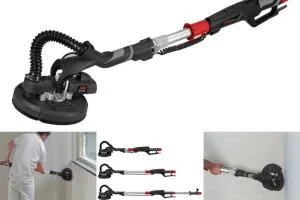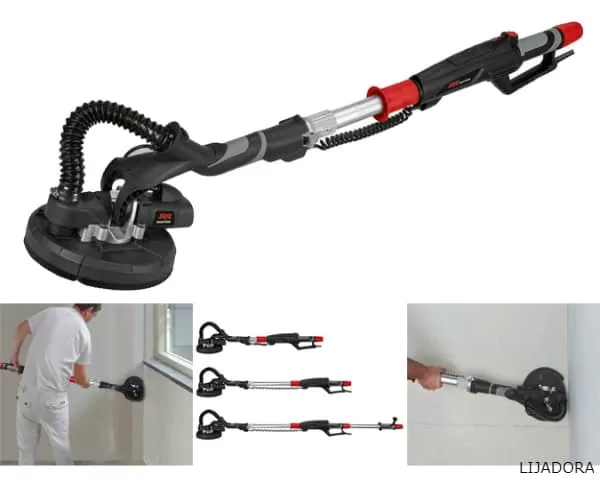Electric Wall Sander
If you’ve recently had to renovate, redecorate or renovate your home, you know that sanding walls can be a tedious, dusty and laborious task. Most walls cover extremely large surface areas. The Power Sander is ideal for this task because of its efficiency and speed to make the activity less strenuous.
Manual Wall Sander
- A hand sander is a hand tool used to sand rough materials and irregular surfaces.
- The purpose of the tool is to speed up the sanding process when working over large areas.
- It also prevents possible injury to the user’s hands and fingers, and reduces the fatigue of hand sanding compared to using sandpaper alone.
- A hand sander is designed with an ergonomically structured handle. Sanding can cause pain in the hands and wrists after a while, so the rounded handle is designed to avoid this kind of discomfort during long work.
Professional Wall Sander
Sanding walls of any kind requires a powerful and fast machine. Powerful to easily get rid of old, rough paint and fast to achieve a high quality smooth finish. Both are essential for the new coat(s) of paint to adhere perfectly and for the wall to be completely smooth and grain-free once it dries. These are the features that all the best wall sanders should have. In this case we recommend a Professional Wall Sander.
Drywall Sander
- Sanding drywall can be a messy and unpleasant task if done by hand.
- Fortunately, dust-free drywall sanders have revolutionized drywall sanding, allowing you to dramatically reduce the time it takes to complete a job
- In addition, they absorb most of the dust and dirt, making cleaning much less complicated.
- Some users even recommend using dust that controls the sanding sheet joint compound to further minimize unhealthy clouding of drywall when sanding.
Concrete Wall Sander
Sanding a concrete wall requires a large orbital, high-speed wall sander for faster material removal. The large base is level on three sides, and is ideal for use on vertical surfaces such as walls. The ergonomic front handle allows for comfortable user operation, and the machine allows for easy mounting and removal of sandpaper.
Wall Sander Brands
- Menzer
- Einhell
- Matrix
- Bosch
- Power Plus
- Ademax
- Casals
- Tacklife
Tacklife
The Tacklife folding LED light, variable speed, 6Pcs sandpaper, 13ft. Dust Hose, Extendable Handle, 14.76ft (4.5M) Power Cable High Power 6.0A, 710W front motor offers great power for sanding pad and is widely used for wall and ceiling sanding.
Menzer
The MENZER wall and ceiling sander comes with a manufacturer’s warranty and usually an abrasive set. It is designed for use on drywall, paint and renovation work.
The plasterboard sander with integrated dust extraction allows for fast and convenient sanding of walls and ceilings, and the removable sanding head tip allows for trouble-free edge sanding. Areas up to three metres high and even inaccessible corners can be easily reached without ladders or scaffolding.
Einhell
The Einhell wall sander for universal use is a valid aid for the realization and renovation of interiors, even for the most demanding hobbyists. Equipped with powerful motors, it is indispensable for sanding walls and ceilings, as well as for removing waste paper, paint, etc.
Matrix
The Matrix Wall & Ceiling Sander is ideal for sanding and preparing drywall on walls or ceilings. Some with detachable telescopic rod for easy transport and storage, with electronic speed control and extra long 4-metre cable.
Bosch
The sanding pad brake on some Bosch sanding machines prevents damage (e.g. scratches) to the workpiece, ensures the finest finish with high sanding performance. Velcro fastening for fast and convenient sanding sheet changes.
Power Plus
The Powerplus Wall & Ceiling Sander with dust extraction hose, 6 sanding pads and carrying bag has a 3 year warranty for the home user. Comes complete with sanding plate cover and dust extraction hose extendable up to 4 meters.
Casals
The Casals Polisher, there is no piece of wood that this powerful polisher cannot shine. One with its unique 180 degree rotating back handle and interchangeable “D” shaped handle, it is easy to use for both right and left hand users. It comes complete in a tidy molded carrying case that is convenient for travel and storage.
How to Use a Wall Sander ?
Sanding walls is easy, but it is important to know some techniques to obtain an excellent result at all times. We will show you how to use different sanding equipment and the best ways to sand walls.
Step 1. Choosing the right sandpaper
When choosing sandpaper, remember to lower the number the thicker the sandpaper. It’s a good idea to start with a score of 60 or 80 and then a score of 120 to finish it off. If your paper is too thick, it can end up making deep cracks and scratches, which may need to be filled in and sanded back down.
Step 2. Hand Sanding and Power Sanding
You can use a simple board with paper attached and sand by hand. Or you can use power sanders, which reduce the work. Round orbital sanders are very good on plaster walls.
Step 3. Putting the sandpaper in a power sander
The sandpaper for power sanders comes with a Velcro backing so you can easily attach it to the sander.
Step 4. Wooden sanding blocks
Wooden sanding blocks are useful for corners and around cornices. Wrap a piece of sandpaper around the wood sanding block and sand in a circular motion.
Step 5. Sand in a circular motion
The best sanding movement is a small circular motion. If you sand a new wall, . Never use force or pressure on the instrument. Let the weight of the machine carry you.
How Does a Wall Sander Work ?
Orbital and Wall Disc Sanders use rotating heads to remove paint from the surface. They use a variety of sanding discs from coarse-grained sanding discs to fine-grained polishers. The disc sander simply rotates while moving the sander slowly along the painted surface. The rotation leaves a circular pattern on the surface if the sander remains in one spot too long. Keep the sander moving and use a light touch. The orbital sander rotates and vibrates. This reduces the risk of leaving a circular pattern on the surface. Both sanding machines remove paint with or against the wood grain. The small, portable size makes these sanders the right tool for removing paint from flat or curved surfaces.
How to Remove Paint with a Wall Sander ?
The sander removes paint in two ways. The motion of the sander removes loose paint, while the abrasive surface of the sandpaper or sanding attachment scrapes off the remaining paint. Whenever sanding paint, it is important to use the proper safety equipment. Safety glasses that protect the sides and front of your eyes are best. A breathing mask or respirator protects your lungs from airborne dust. Before you sand through layers of old paint, take a sample to your local hardware store or a testing lab and have it checked for lead.
How to Remove the Gotele With a Wall Sander ?
There are several ways to remove the droplet from the wall. One way is to soak the walls and then remove the material with a spatula but this process is very tiring and not very effective. The large base is level on three sides, and is ideal for use on vertical surfaces such as walls. The ergonomic front handle allows for comfortable user operation, and the machine allows for easy mounting and removal of sandpaper.
Related Products in ALPHAPEDIA
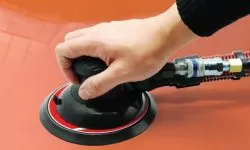
AIR or PNEUMATIC SANDER: Great Price on Qualified Products

PNEUMATIC SANDER for Metal, With Vacuum. Its Prices and Brands

MANUAL HAND SANDER: Brands as Dewalt and Black & Decker
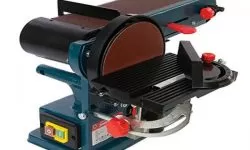
BELT BANK SANDER for WOOD and HOMEMADE
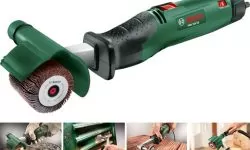
DELTA SANDER: Prices, Brands and Offers
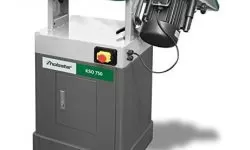
BELT SANDER for Metal, Floors and Knife Sharpening. Brands
Other Topics of Interest in ALPHAPEDIA

HOW TO REMOVE MOLD FROM CLOTHES ?

FREE BACHELOR DEGREE IN LABOR RELATIONS

FREE BACHELOR DEGREE IN ANIMATION

ACTUARIAL DEGREE

HOW ELECTRICITY WAS DISCOVERED ?

FREE MASTER DEGREE IN PHYSICAL THERAPY
Image of Wall Sander
